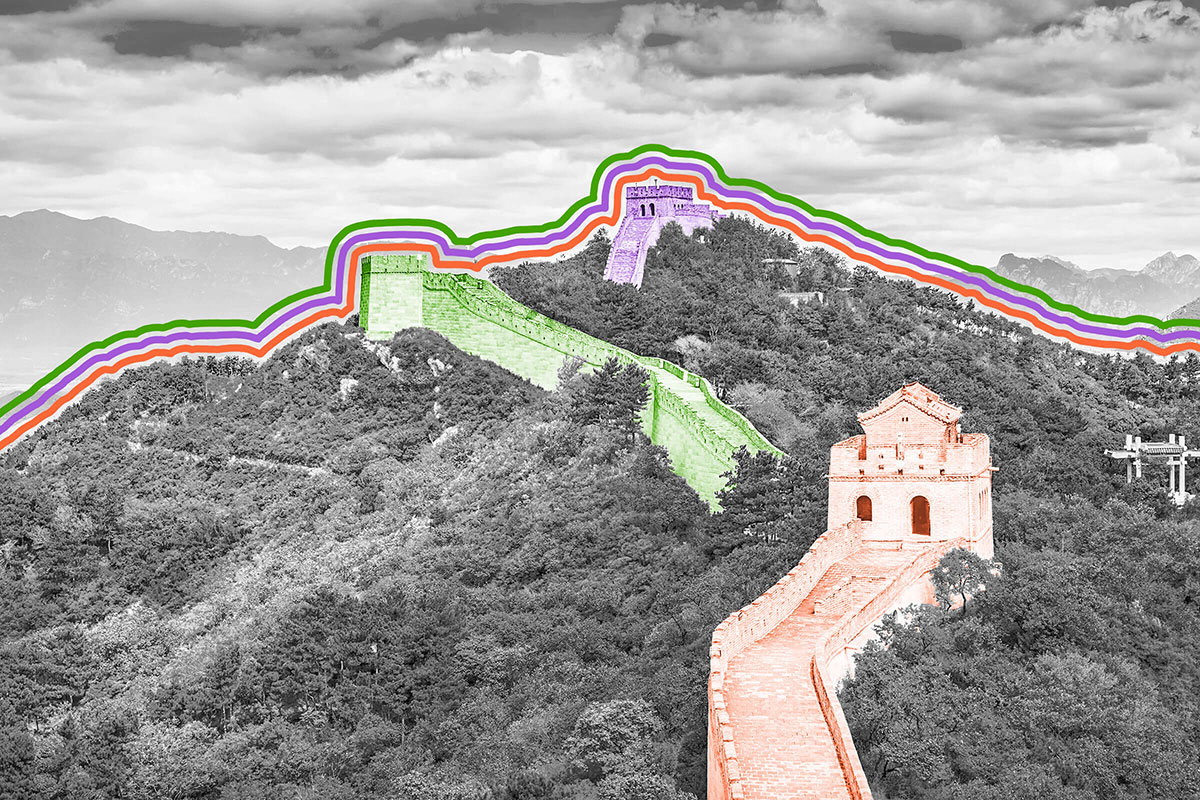
The Great Wall of China was built with porridge in the mortar.
Traversing thousands of miles across eastern Asia, the Great Wall of China has stood as a symbol of the country's military and technological know-how for more than 2,000 years. And thanks to a team of scientists at Zhejiang University, we now know that the secret to its legendary endurance is … sticky rice soup?
As explained in Accounts of Chemical Research in 2010, the scientists stumbled upon this discovery while examining mortar samples from the Great Wall and other long-standing Chinese buildings. They realized the mortar was an unusual composite created from slaked lime and congee, the former a heated type of limestone exposed to water, and the latter a pudding-like rice porridge commonly eaten throughout Asia. When combined with the lime’s calcium carbonate, a complex carbohydrate in the congee known as amylopectin helped stymie the development of calcium carbonate crystals in the mortar, resulting in a compressed structure that gave the ancient barrier the strength to withstand earthquakes and bulldozers.
While not invented until around the fifth century CE, well after the initial parts of the Great Wall were raised, the sticky rice-lime mortar was used for the well-preserved sections that remain from the Ming dynasty (the 14th through 17th centuries). Which all goes to show that along with fueling the diet of a country of 1.4 billion people, this simple porridge packs enough power to keep historic structures upright through all sorts of human- and nature-instigated onslaughts.
Porridge isn't the only kitchen product used to build magnificent structures, as salt is capable of surprising results in that capacity as well. The concept of salt-based buildings is actually a pretty old one: First century CE Roman dignitary Pliny the Elder wrote of seeing "towers built of square blocks of salt" in the Middle Eastern city of Gerrha, while 14th-century explorer Ibn Battuta described the salt mosques in the African village of Taghaza. Of course, the mineral was mainly prized in antiquity for its food storage and preparation capabilities, while its propensity to dissolve in water presented sustainability problems. Nevertheless, modern builders are increasingly hungering for salt as a versatile, environmentally friendly component of the construction and design processes. Given its widespread availability, it may not be long before salty projects like Bolivia's Palacio de Sal hotel go from novelty dish to main course as architectural innovations continue to evolve.

